Valeriy Vyatkin
Department of Electrical Engineering and Automation, Aalto University, Espoo, Finland, Department of Computer Science, Electrical and Space Engineering, Luleå University of Technology, Luleå, Sweden
Hybrid Digital Twin for process industry using Apros simulation environment
Dec 03, 2021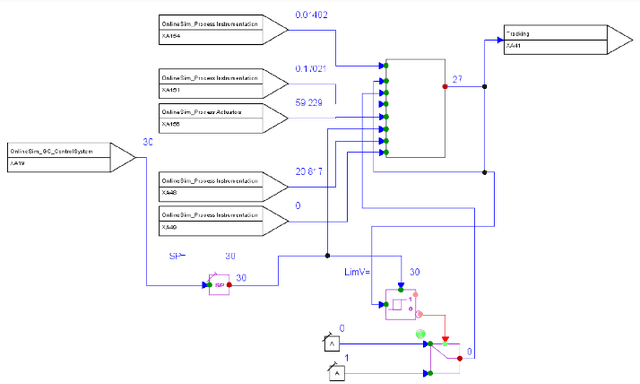
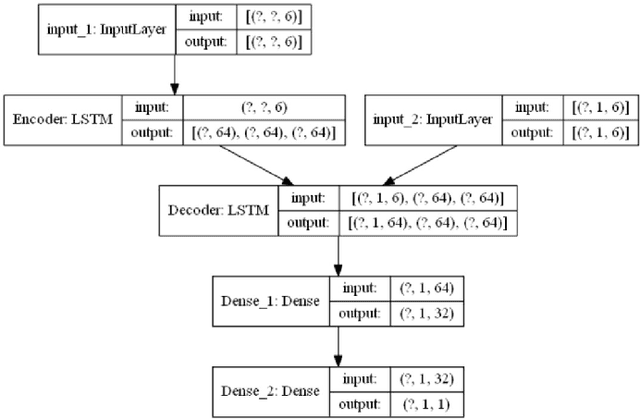
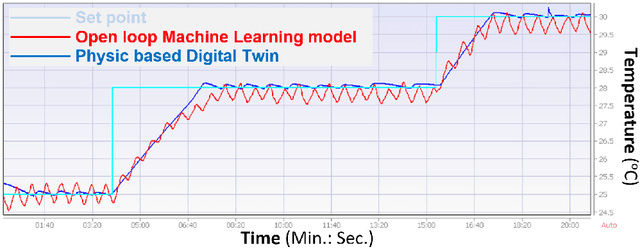
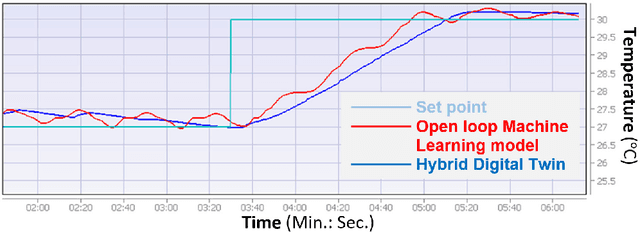
Abstract:Making an updated and as-built model plays an important role in the life-cycle of a process plant. In particular, Digital Twin models must be precise to guarantee the efficiency and reliability of the systems. Data-driven models can simulate the latest behavior of the sub-systems by considering uncertainties and life-cycle related changes. This paper presents a step-by-step concept for hybrid Digital Twin models of process plants using an early implemented prototype as an example. It will detail the steps for updating the first-principles model and Digital Twin of a brownfield process system using data-driven models of the process equipment. The challenges for generation of an as-built hybrid Digital Twin will also be discussed. With the help of process history data to teach Machine Learning models, the implemented Digital Twin can be continually improved over time and this work in progress can be further optimized.
Digital Twin-Assisted Controlling of AGVs in Flexible Manufacturing Environments
Nov 05, 2021
Abstract:Digital Twins are increasingly being introduced for smart manufacturing systems to improve the efficiency of the main disciplines of such systems. Formal techniques, such as graphs, are a common way of describing Digital Twin models, allowing broad types of tools to provide Digital Twin based services such as fault detection in production lines. Obtaining correct and complete formal Digital Twins of physical systems can be a complicated and time consuming process, particularly for manufacturing systems with plenty of physical objects and the associated manufacturing processes. Automatic generation of Digital Twins is an emerging research field and can reduce time and costs. In this paper, we focus on the generation of Digital Twins for flexible manufacturing systems with Automated Guided Vehicles (AGVs) on the factory floor. In particular, we propose an architectural framework and the associated design choices and software development tools that facilitate automatic generation of Digital Twins for AGVs. Specifically, the scope of the generated digital twins is controlling AGVs in the factory floor. To this end, we focus on different control levels of AGVs and utilize graph theory to generate the graph-based Digital Twin of the factory floor.
An Artificial Intelligence Framework for Bidding Optimization with Uncertainty inMultiple Frequency Reserve Markets
Apr 05, 2021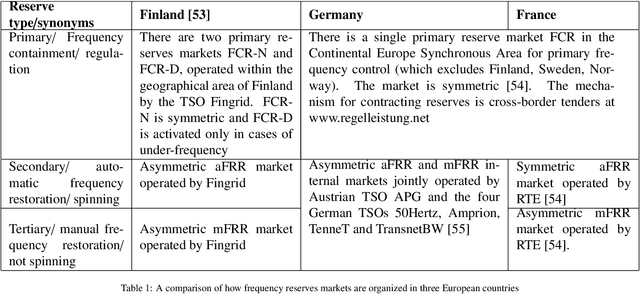
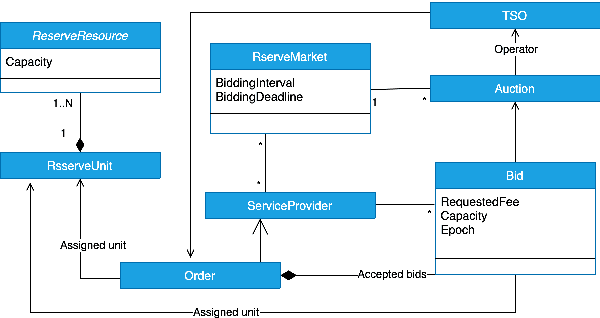
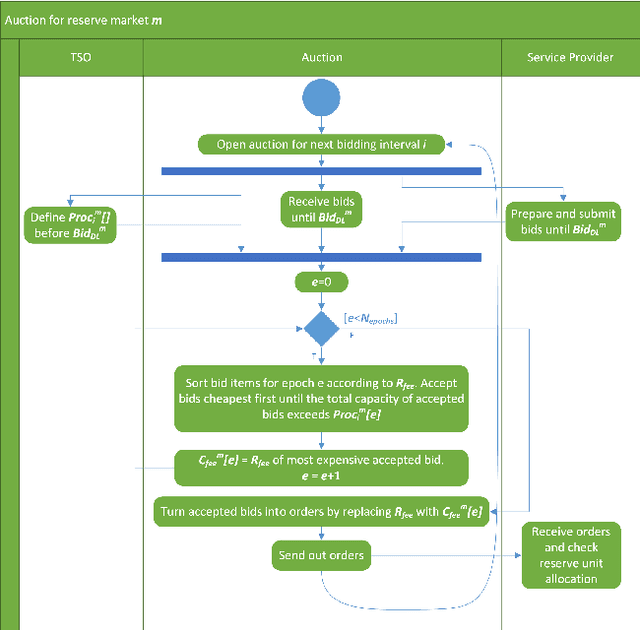
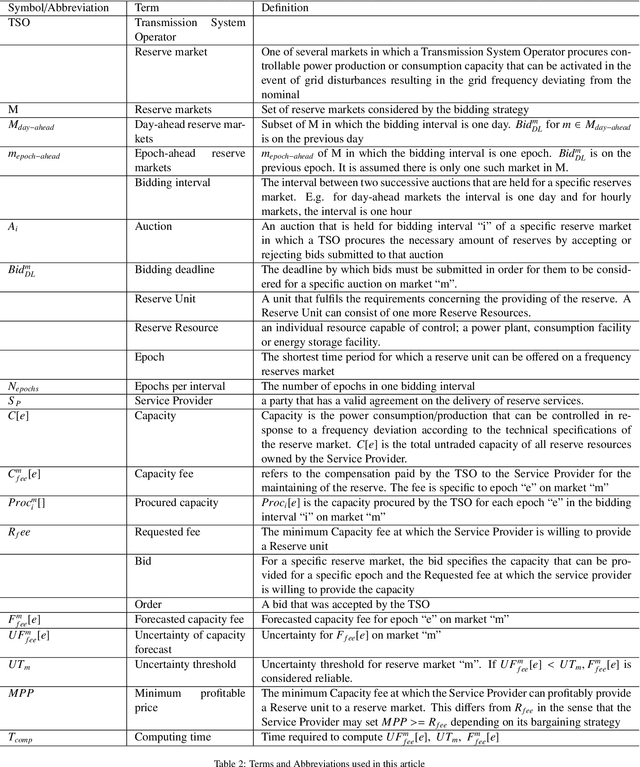
Abstract:The global ambitions of a carbon-neutral society necessitate a stable and robust smart grid that capitalises on frequency reserves of renewable energy. Frequency reserves are resources that adjust power production or consumption in real time to react to a power grid frequency deviation. Revenue generation motivates the availability of these resources for managing such deviations. However, limited research has been conducted on data-driven decisions and optimal bidding strategies for trading such capacities in multiple frequency reserves markets. We address this limitation by making the following research contributions. Firstly, a generalised model is designed based on an extensive study of critical characteristics of global frequency reserves markets. Secondly, three bidding strategies are proposed, based on this market model, to capitalise on price peaks in multi-stage markets. Two strategies are proposed for non-reschedulable loads, in which case the bidding strategy aims to select the market with the highest anticipated price, and the third bidding strategy focuses on rescheduling loads to hours on which highest reserve market prices are anticipated. The third research contribution is an Artificial Intelligence (AI) based bidding optimization framework that implements these three strategies, with novel uncertainty metrics that supplement data-driven price prediction. Finally, the framework is evaluated empirically using a case study of multiple frequency reserves markets in Finland. The results from this evaluation confirm the effectiveness of the proposed bidding strategies and the AI-based bidding optimization framework in terms of cumulative revenue generation, leading to an increased availability of frequency reserves.
Integrating 2D and 3D Digital Plant Information Towards Automatic Generation of Digital Twins
Apr 05, 2021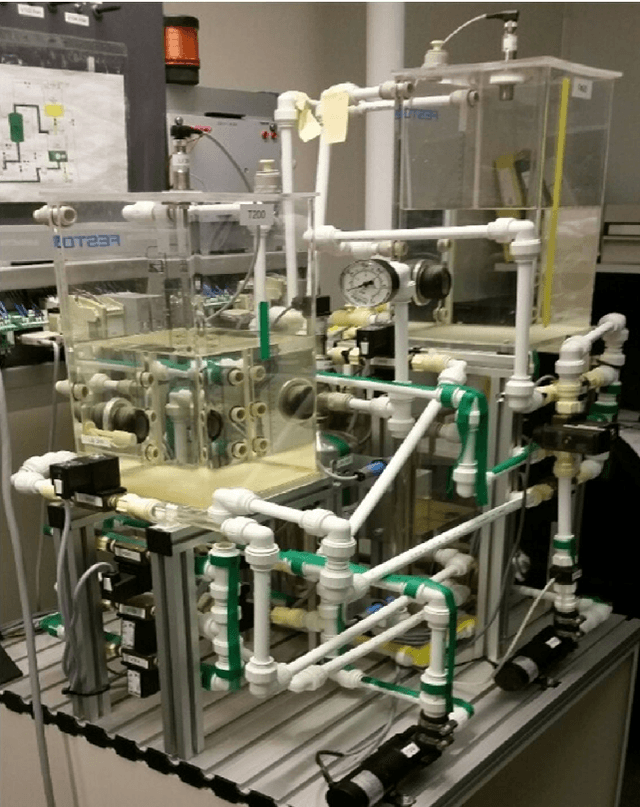
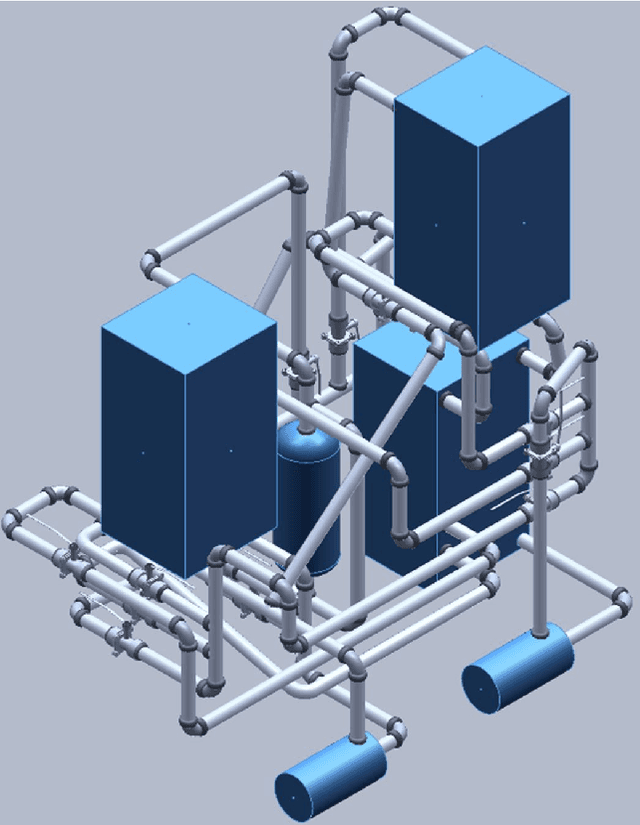
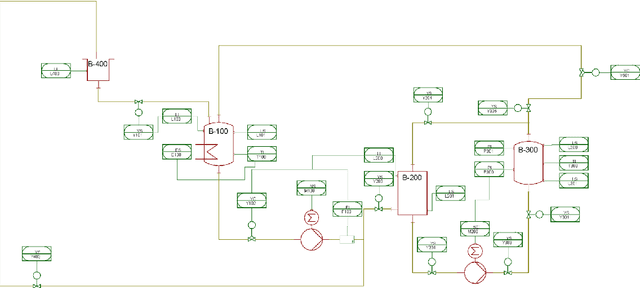
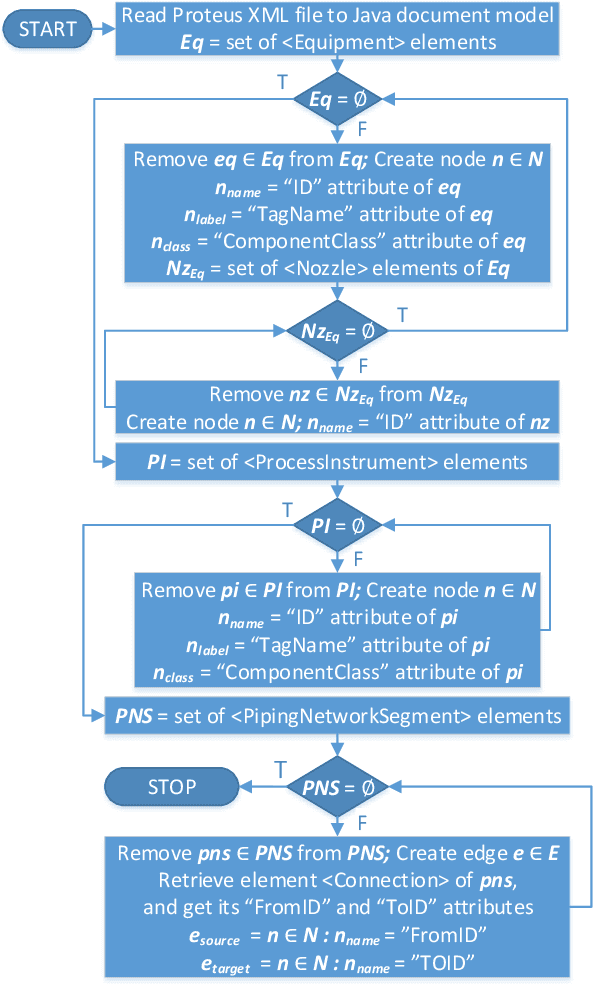
Abstract:Ongoing standardization in Industry 4.0 supports tool vendor neutral representations of Piping and Instrumentation diagrams as well as 3D pipe routing. However, a complete digital plant model requires combining these two representations. 3D pipe routing information is essential for building any accurate first-principles process simulation model. Piping and instrumentation diagrams are the primary source for control loops. In order to automatically integrate these information sources to a unified digital plant model, it is necessary to develop algorithms for identifying corresponding elements such as tanks and pumps from piping and instrumentation diagrams and 3D CAD models. One approach is to raise these two information sources to a common level of abstraction and to match them at this level of abstraction. Graph matching is a potential technique for this purpose. This article focuses on automatic generation of the graphs as a prerequisite to graph matching. Algorithms for this purpose are proposed and validated with a case study. The paper concludes with a discussion of further research needed to reprocess the generated graphs in order to enable effective matching.
Automatic Assembly Planning based on Digital Product Descriptions
Mar 25, 2021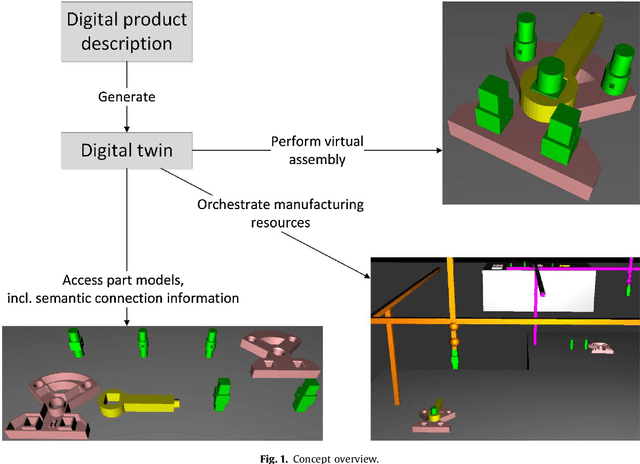
Abstract:This paper proposes a new concept in which a digital twin derived from a digital product description will automatically perform assembly planning and orchestrate the production resources in a manufacturing cell. Thus the manufacturing cell has generic services with minimal assumptions about what kind of product will be assembled, while the digital product description is designed collaboratively between the designer at an OEM and automated services at potential manufacturers. This has several advantages. Firstly, the resulting versatile manufacturing facility can handle a broad variety of products with minimal or no reconfiguration effort, so it can cost-effectively offer its services to a large number of OEMs. Secondly, a solution is presented to the problem of performing concurrent product design and assembly planning over the organizational boundary. Thirdly, the product design at the OEM is not constrained to the capabilities of specific manufacturing facilities. The concept is presented in general terms in UML and an implementation is provided in a 3D simulation environment using Automation Markup Language for digital product descriptions. Finally, two case studies are presented and applications in a real industrial context are discussed.
Applying graph matching techniques to enhance reuse of plant design information
Mar 23, 2021
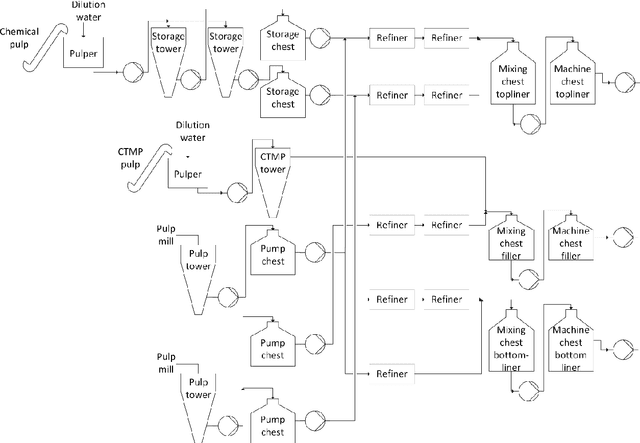
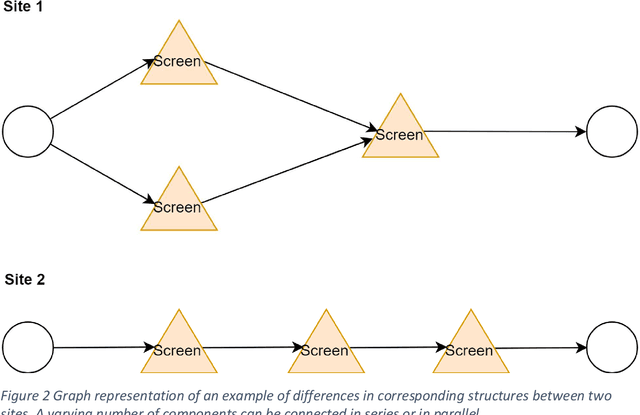
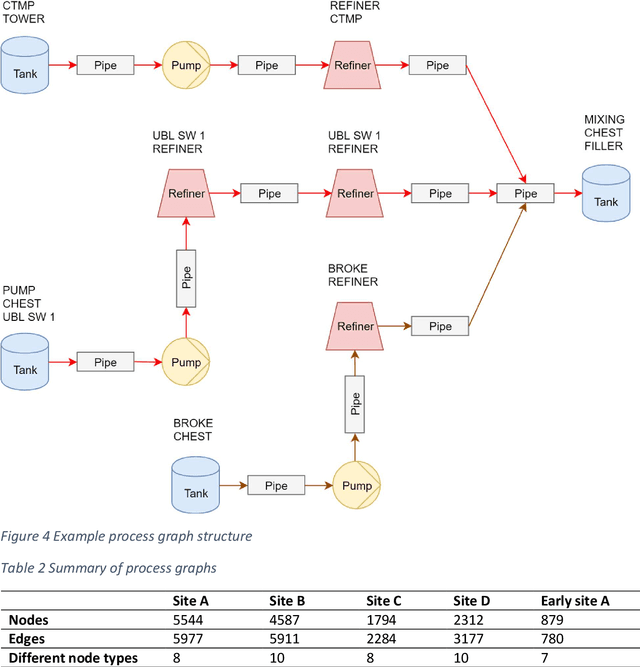
Abstract:This article investigates how graph matching can be applied to process plant design data in order to support the reuse of previous designs. A literature review of existing graph matching algorithms is performed, and a group of algorithms is chosen for further testing. A use case from early phase plant design is presented. A methodology for addressing the use case is proposed, including graph simplification algorithms and node similarity measures, so that existing graph matching algorithms can be applied in the process plant domain. The proposed methodology is evaluated empirically on an industrial case consisting of design data from several pulp and paper plants.
 Add to Chrome
Add to Chrome Add to Firefox
Add to Firefox Add to Edge
Add to Edge